[PREVIEW] “BOWIE” Group Exhibit Of Rare & Iconic Photographs @ Morrison Hotel Gallery [NYC, Maui, LA]
This sale/exhibit celebrates the life & career of one of rock’s most iconic figures w/a collection of amazing behind the scenes photos & legendary images

© Masayoshi Sukita, 1973
There will never be another David Bowie. It sounds cliche, but it’s true. That’s the reason that his death hit so many so hard, because we know that if there’s one artist in music that was ever truly irreplaceable, he was definitely at the top of the short list. Not only will there never be another one like him, but if you’d give it a few years, he wouldn’t even be like himself anymore. Rather, his approach would shift dramatically; his sound, his entire aesthetic. He’d morph into something completely new, yet just as fascinating and unexpected. A reflection of his chameleonic nature, it’s always seemed fitting that some of his earliest success came with the song, “Changes” from the Hunky Dory [1971] — also being cited as the last song that he ever performed on stage before retiring his live act in 2006. He sold the alien persona so well, because on some level, we all knew that he was the closest thing to, and most ideal representation of, one that we’d ever seen before.
One of the closest modern day versions that we might have to someone like him might be someone like Kevin Barnes, the mastermind behind the project, of Montreal. Barnes is another prolific artist who mutates his sound and direction on a dime, and he does so in a way that feels so organic that you know that it would only be forced if he didn’t, choosing to continue riding something out once he feels that it’s outlived its usefulness. There’s a rare purity to that, but, despite his own brilliant compositions and originality, Kevin‘s reference points from The Beatles to Prince often present themselves quite clearly. Bowie, on the other hand, came from another time — a time out of time, almost — and felt as if he forged himself out of some form of otherworldy gem stone. He’s an icon and one that rose at a time where he was able to push his own unique voice out to the world on such a large scale and successfully magnetize the entire planet to it. Then, he would simply flip a switch and come back reborn, only to successfully have the world follow him anywhere. Even more impressive is that he maintained it for decades.
The Lady Gaga’s of the world may try to sell themselves in a similar way, but they’re simply pilfering some Mark Ryden concept like the meat dress, selling the idea to the public as original, and singing the same generic pop hits that anyone else is pumping out. What they are doing isn’t inspired, so it isn’t inspiring. Plus, Gaga is just swiping the majority of her act from Madonna who, in turn, was openly trying to bite from Marilyn Monroe. And Madonna hasn’t aged gracefully, the way that Bowie did; instead she comes across like someone aggressively clawing to maintain a spot in the limelight and, regardless of whether or not she’s been viewed as a chameleon herself, the truth is that she’s consistently tried to sell herself with a one-dimensional sexualized image steeped in controversy that she’s be gripping onto from the beginning, well after it grew beyond tired or reasonable. Her version of evolution, like so many others, is to try and tap into what the kids are doing and play to that with a new insinscere version of it, rather than continue to push themselves or continue to innovate. And just like she mined gay culture from the Paris Is Burning crowd without their permission, Kanye West dug into the noisier underground industrial rap sounds of acts like Death Grips and B L A C K I E (all caps, with spaces) to sell his own tale of innovation to the world. Similarly, Bowie, took note from the krautrock scene in the 1970s with some liberal help of his cohort Brian Eno. The difference? I guess, maybe it’s arbitrary, or maybe you just feel it. Bowie took those references and really felt as if he made something of his own from it, something that only he could truly do, and the Berlin trilogy was a masterpiece.
From the spaced-out cosmic glam of Ziggy Stardust to the crisp cold chic of his Thin White Duke persona and beyond, David Bowie has donned some of the most intoxicating and compelling looks in rock music history. As a music photographer myself, I can honestly say that his images are some of the only photographs that remain so vital and interesting to me no matter how often new ones surface. Some of the photographers responsible for chronicling his life, work, and life’s work, such as Mick Rock, Masayoshi Sukita, Geoff MacCormack, and Duffy, continued to work with him for years — some, even decades. This week, a brand new group exhibit opens featuring the work of these accomplished figures among others, showcasing some truly awe-inspiring images taken throughout Bowie‘s incomparable career. To be completely honest, while the press release caught my attention, the photographs genuinely surpassed my expectation and blew me away. This show succeeds on multiple levels and not simply because of the subject, his semi-recent demise, or even the legacy left behind. What sets this show apart is it’s sheer range, both the span of time that it covers, as well as the variety and breadth of context. There are fascinating images that many of us have seen multiple times, often reposted on the internet in various resolution without any form of credit or greater contest tied to them. For this new exhibit celebrating his life and career, these images, from the classic press shots to those with other celebrities like Debbie Harry, Iggy Pop, Lou Reed, Trent Reznor, and Elizabeth Taylor are presented with the name of those who snapped them attached and, often, even with additional info and backstory. But, my favorites in this collection are easily the tangential contributions that I’ve never seen before, the pictures that come from the same photoshoots as the iconic images, but were never used; the behind the scene shots on set for the legendary album covers; or even those of David simply working or mucking about outside of the limelight.
Beginning this Thursday, February 22nd and running until March 23rd, Bowie will be on display and open to the public at each of the 3 Morrison Hotel Gallery spaces, located in New York City, Maui, and Los Angeles, respectively. Morrison Hotel also maintains what the press release refers to as a “robut online presence,’ with a website “featuring over 100,000 images searchable by photographer, music artist, band or concert,” where it will also be visible for those unable to view and/or purchase the work in person.
Check out preview images for the exhibit below the following event details…
WHAT:
BOWIE
A Photographic Exhibit & Sale Celebrating
The Life and Career of David Bowie
WHEN:
WHERE:
Additional images from this collection, as well as others, can be viewed, and artwork can be purchased at MorrisonHotelGallery.com
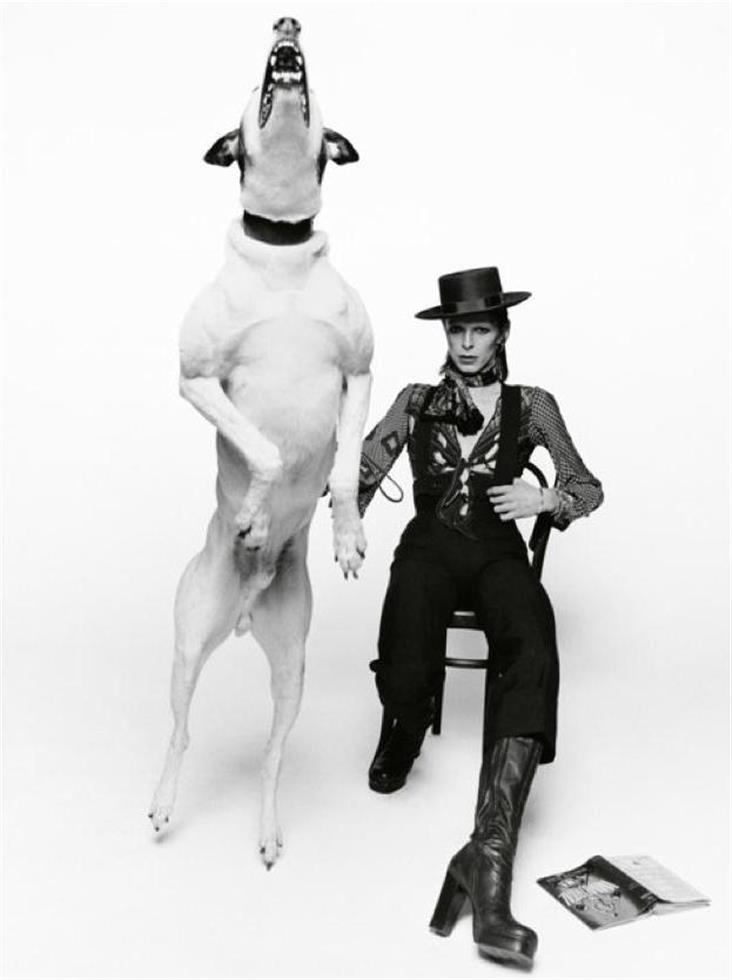
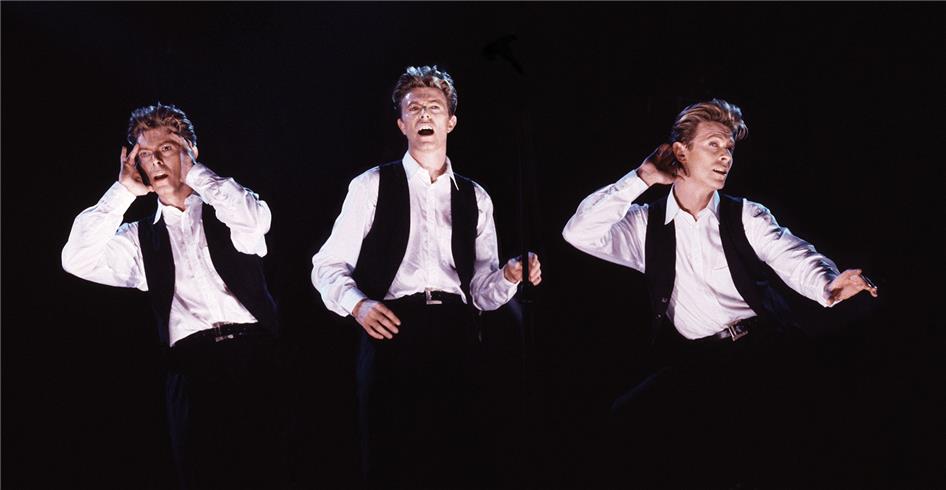
© Guido Harari, 1990
“Bowie Keeps Swinging”
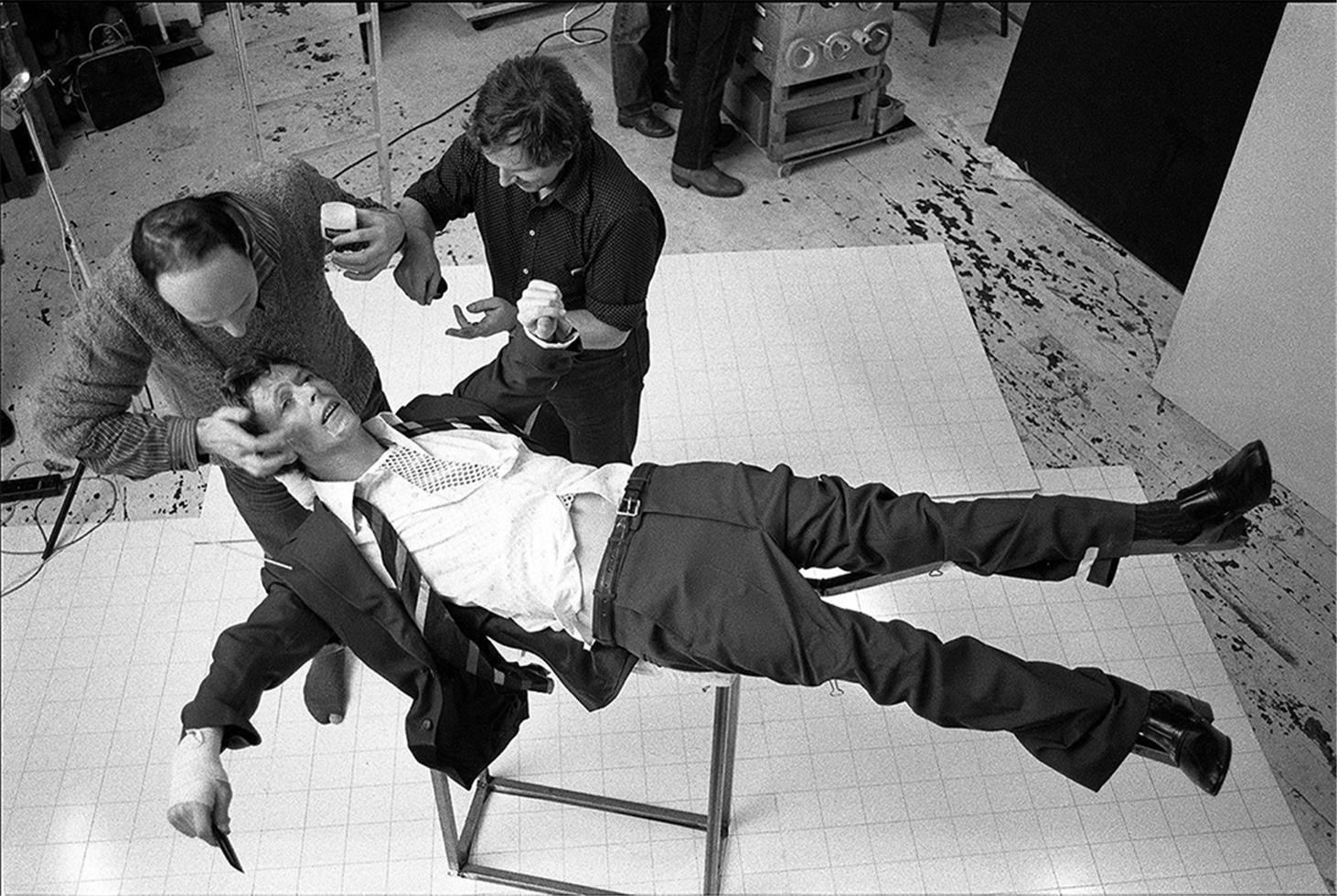
© Duffy, 1979

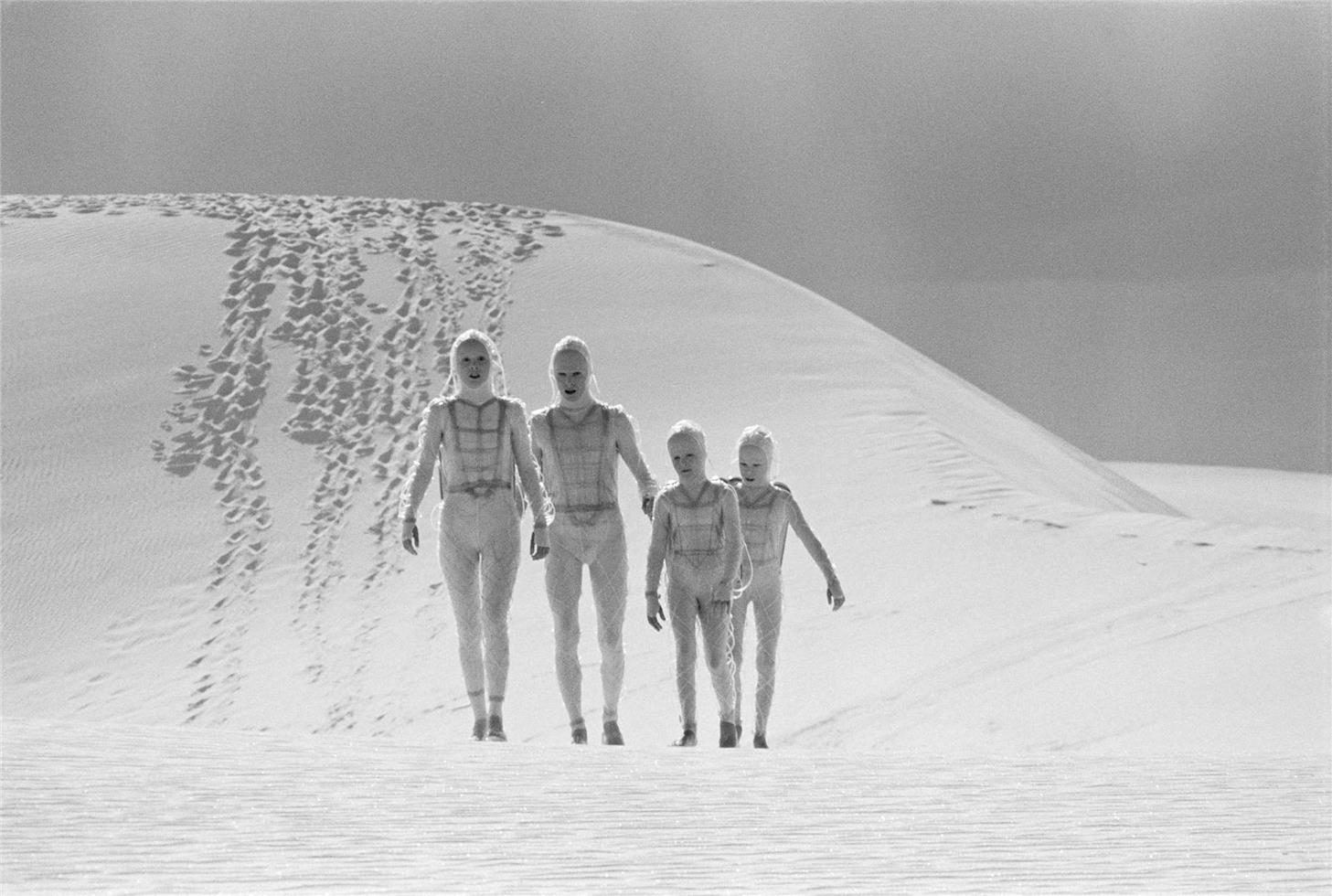
© Geoff MacCormack, 1975
“I’m so glad I took this (once in a lifetime) of The Man, en famille, before he fell to earth. The temperature was unbearably hot at White Sands in New Mexico. This was the site of the detonation of the first atomic bomb in 1945, an eerie and desolate place.” –Geoff MacCormack
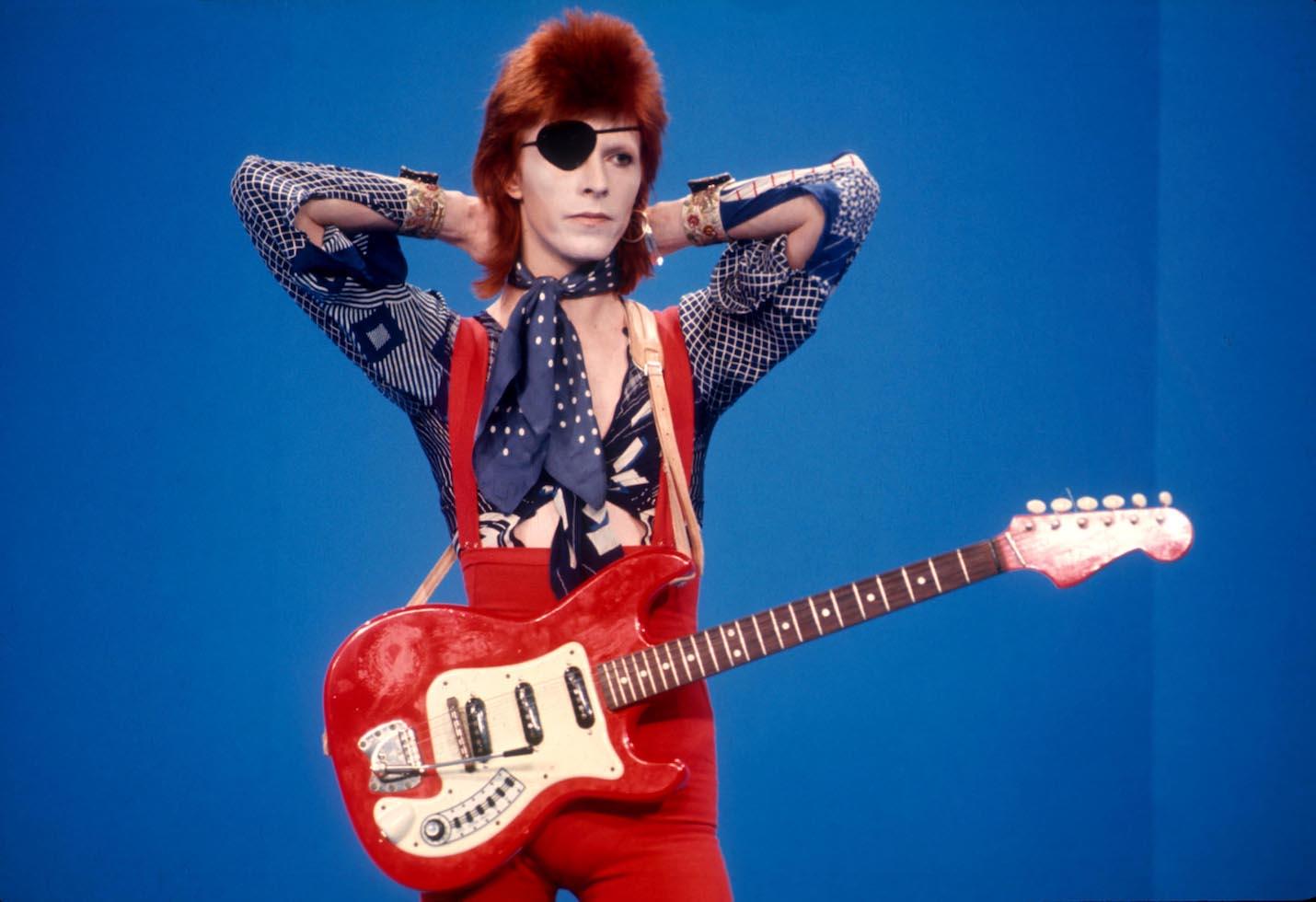
© Barry Schultz, 1974
David Bowie at Hilversum, Holland TV Studios for TOP POP.
Bowie played-back `Rebel Rebel` (several times) the hit single from the Diamond Dogs LP 1974. Bowie wore an eye-patch on this occasion only.
“David Bowie wears an eyepatch in a red suit and guitar on this blue background at Top Pop television studios in Holland while doing playback to his hit song “Rebel Rebel” in 1974. I took this photo of him along with a few other Dutch photographers during the taping of this video. Bowie was running late and this historic moment almost never happened due to the TV crew wanting to go home on time. But luckily they stayed and this iconic photo was able to be made. This image has gone viral on the internet, but the copyright to this photograph still belongs to me.” — Barry Schultz
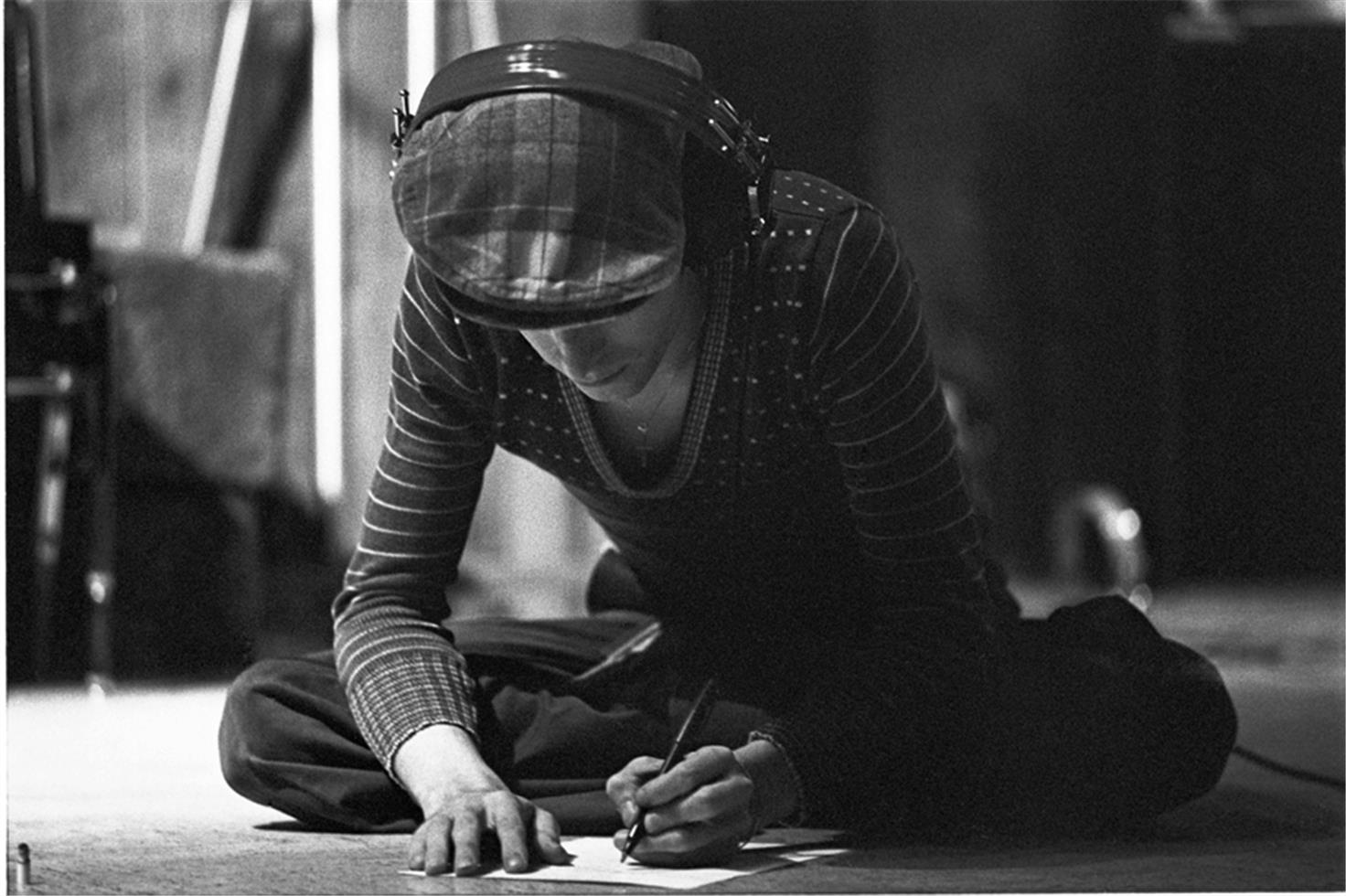
© Geoff MacCormack, 1975
David writing lyrics for ‘Station to Station’ at Cherokee Studio in Los Angeles.
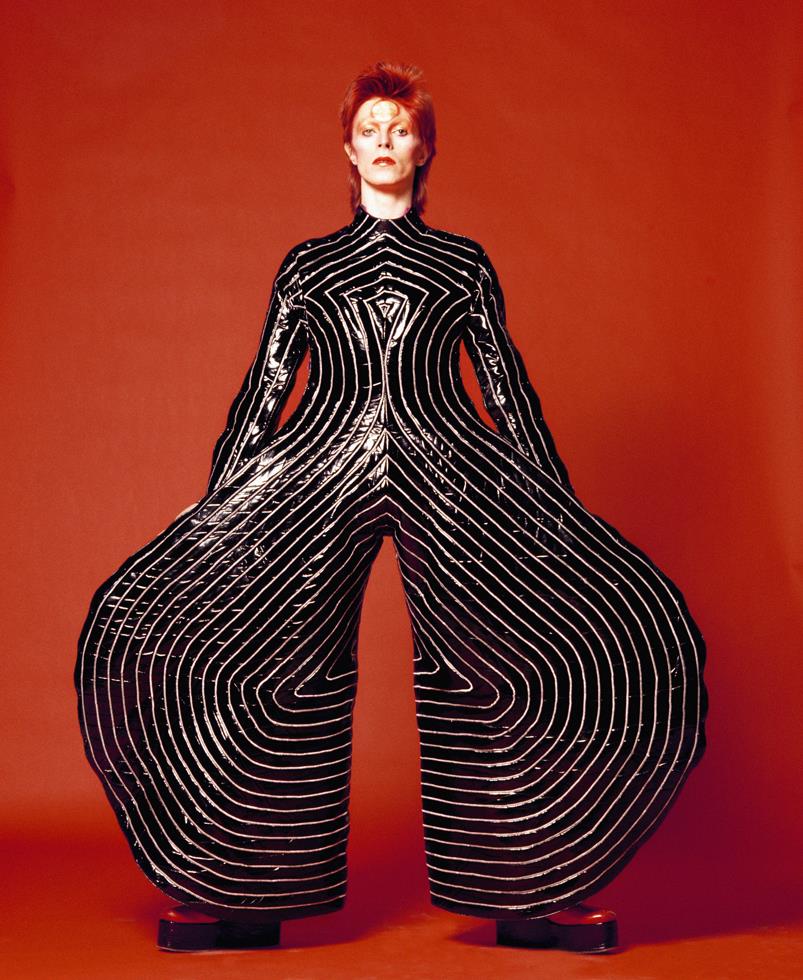
© Masayoshi Sukita, 1973
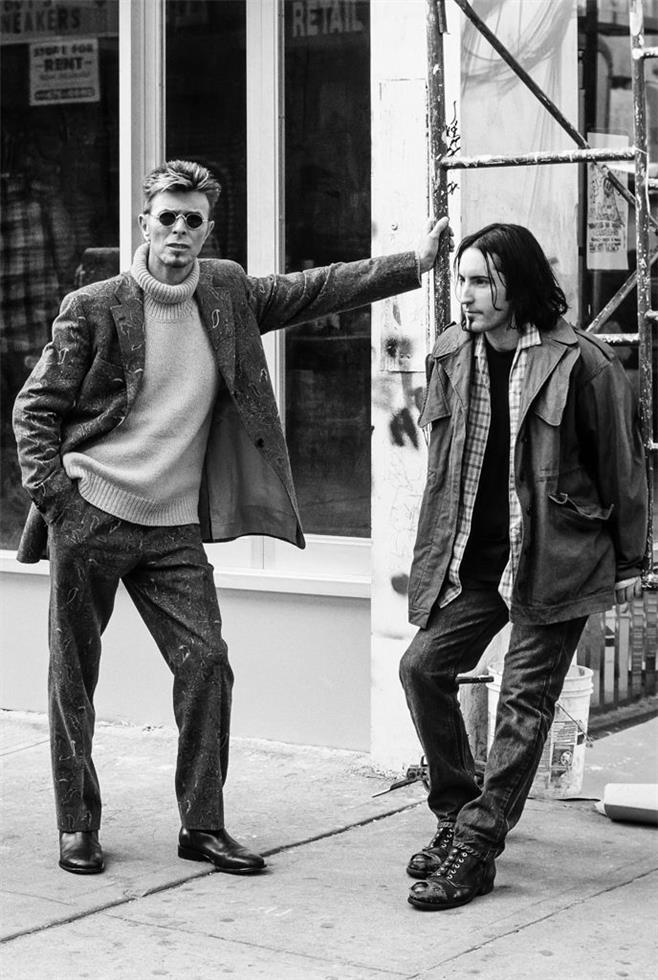
© Lynn Goldsmith, 1997
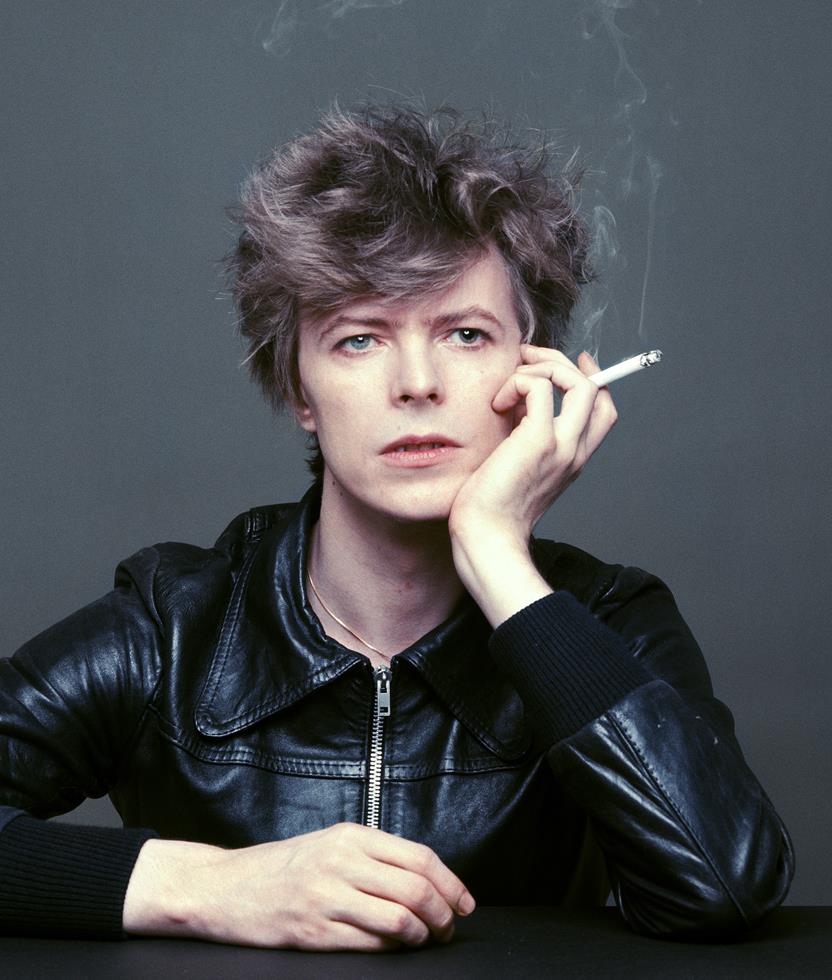
© Masayoshi Sukita, 1977

© Mick Rock, 1972
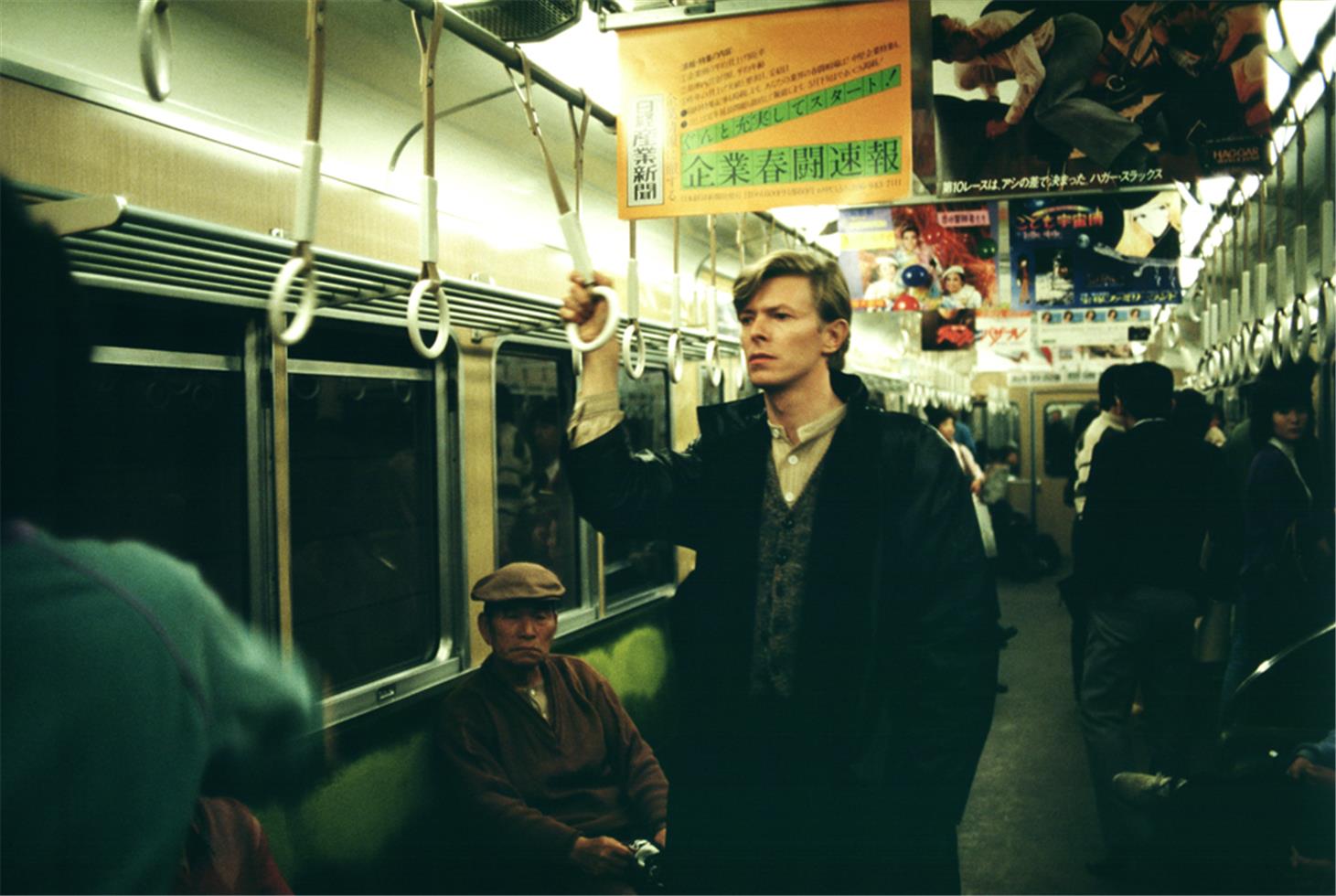
© Masayoshi Sukita, 1980
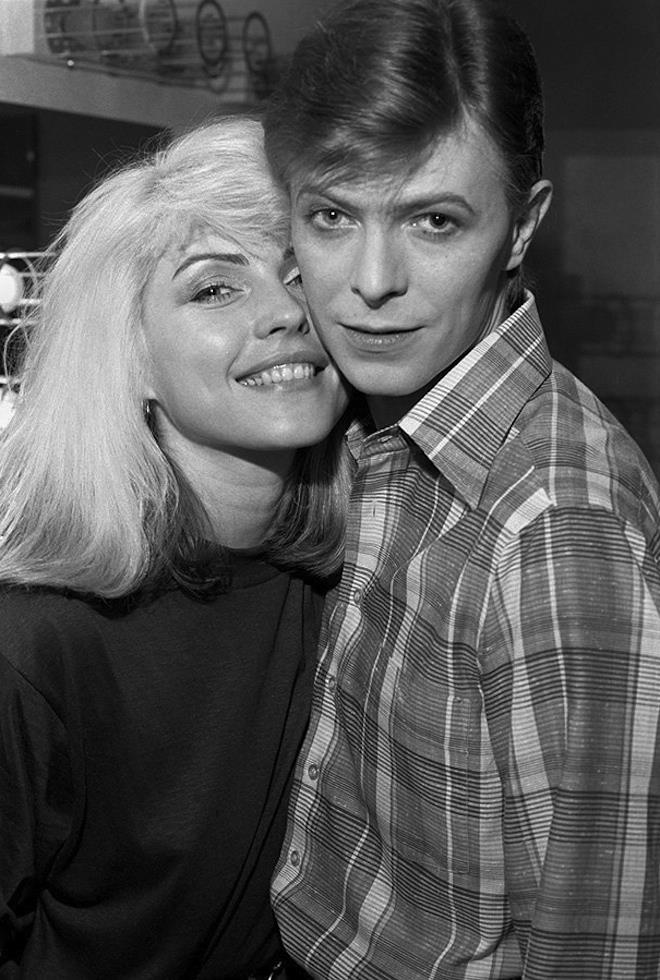
© Chris Stein, 1977
This photo was taken in 1977 and shows Debbie with a young David Bowie backstage during Iggy Pop’s Idiot Tour, in which Bowie played the keyboard
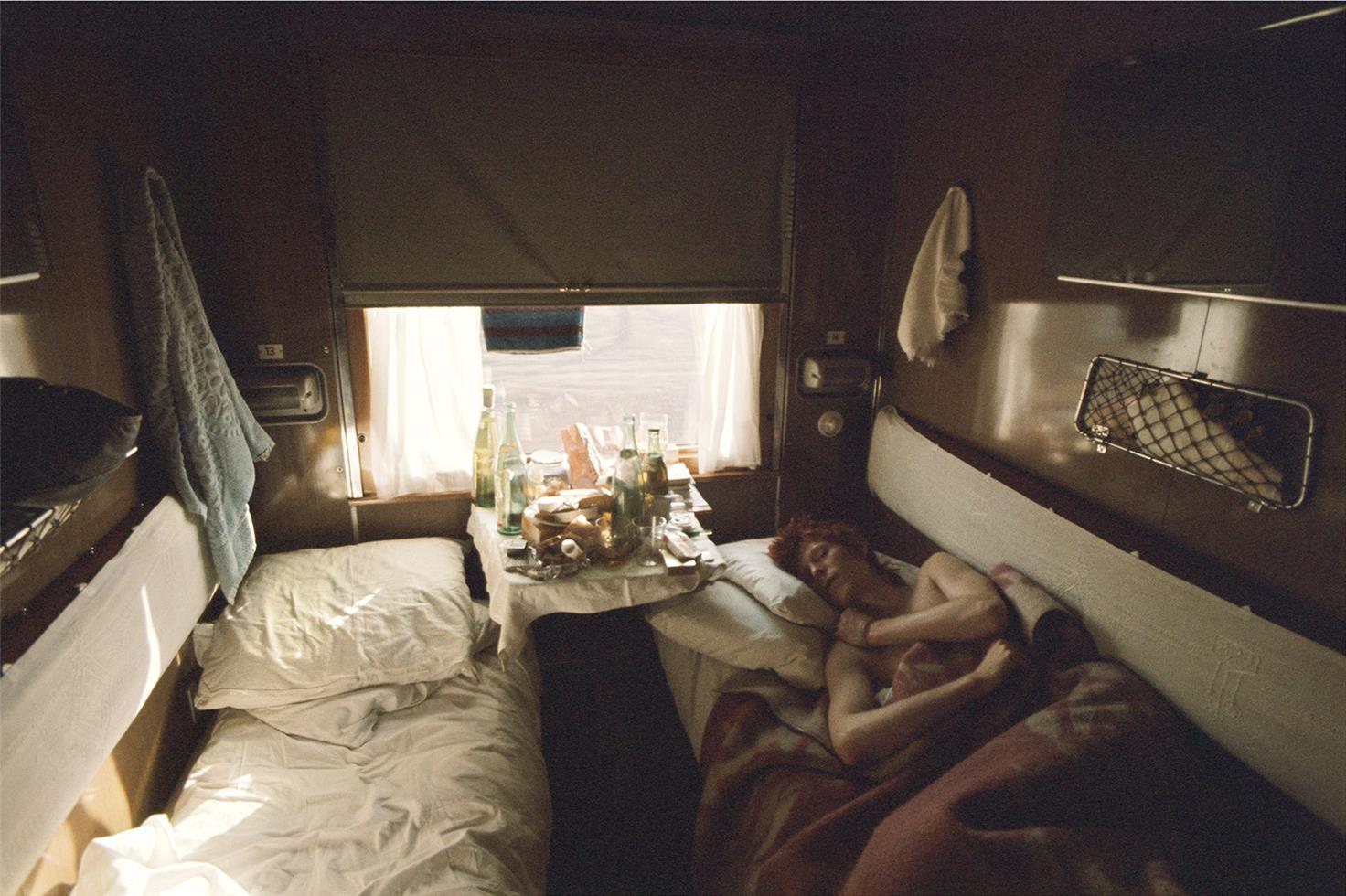
© Geoff MacCormack, 1973
“David sleeping off a long night of boozing somewhere in Siberia in 1973. We drank cheap Riesling and beer (Peeva) with a bunch of soldiers we’d met the night before. They were friendly and inquisitive as to what life was like in the West. We asked them what they did in the army: they said they were in the construction unit. You can just make out the bleak Siberian landscape through the window.” –Geoff MacCormack
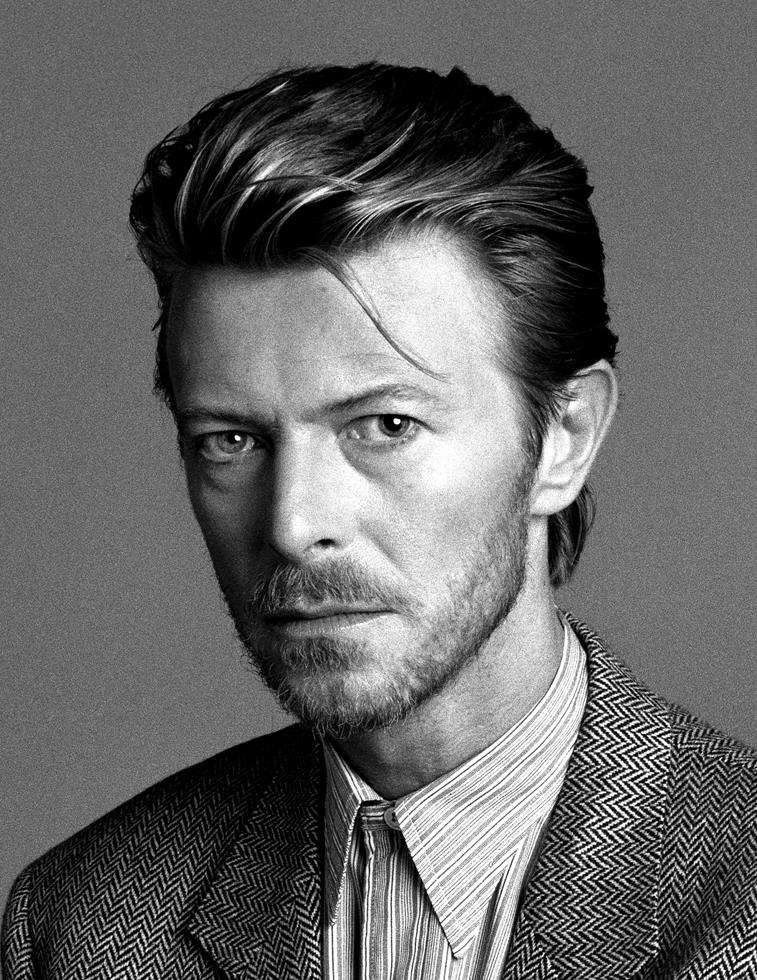
© Masayoshi Sukita, 1989